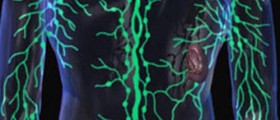
The vulva is an external part of female genitalia. This organ can be affected by various changes that affect either the skin or the mucous membrane. Sometimes both of these surfaces are covered with different skin lesions. Vulvar lesions range from benign growths to malignant tumors. There may also be dystrophies, dermatoses and infections. Even though in some cases vulvar lesions may go undetected because they are asymptomatic, it is a general rule that a woman must have at least one symptom such as pruritus (itchy sensation), dysuria (painful urination) or dyspareunia (painful sexual intercourse).Different Vulvar LesionsViral InfectionsThere is a whole range of viral infections which may induce formation of different vulvar lesions. For example, genital warts affect the vulva, but may also be found in the vagina and cervix. These cauliflower lesions are not painful, but cause pruritus, erythema and excessive vaginal discharge. Genital herpes simplex is always accompanied by formation of blisters that affect the vulva and nearby tissues. Once they burst due to moisture remnant ulcers become quire painful and hard to deal with. The disease is recurrent.Bacterial InfectionsGonorrhea may be asymptomatic, but there may be vulvar pruritus, burning sensation, pain and patients basically report the presence of green-yellow discharge. Granuloma inguinale is another sexually transmitted disease caused by bacteria. Initially, there are vulvar lesions in a form of painless maculae and papulae. These eventually become ulcerations and once the lesions become infected, an individual may report painful sensation as well as enlargement of regional lymph nodes.
One more bacterial infection associated with formation of vulvar lesions is lymphogranuloma venereum. In the first phase of the disease, the vulva is covered with a painless papule or ulcer which heals within a few days. In the second phase, after 2-6 weeks, patient's regional lymph nodes become enlarged and quite painful. Additional symptoms include fever and chills, myalgia, arthralgia and perianal edema. In syphilis the vulva is covered with typical lesions called chancres which develop 10-90 day after exposure to the bacteria. These lesions are painless.
Chancroid is a sexually transmitted disease with painful vulvar lesions and several more symptoms such as malaise, headache and fever. The vulvar lesions are accompanied by severe enlargement and tenderness of inguinal lymph nodes.Cysts and TumorsBenign cysts are asymptomatic lumps which predominantly affect the labia majora. They may get inflamed and then become tender. One of common cysts that affect the vulva are Bartholin's duct cysts. These affect one side, are tender and may eventually get inflamed and cause formation of an abscess. The formation of abscess results in severe swelling, redness, deformity and pain.
Basal cell carcinoma is a nodular tumor with a central ulcer. It does not cause any kind of sensation such as discomfort/pain but may be itchy, a source of bleeding and discharge. The tumor can sometimes cause burning sensation.
And finally, one of the most serious illnesses associated with formation of painful vulvar lesions is definitely squamous cell hyperplasia/squamous cell carcinoma. In squamous hyperplasia lesions are red, brown or white, poorly defined, localized and extensive. Progression of hyperplasia leads to invasive vulvar cancer. The severe and non-healing ulcer causes pain, pruritus and depending on the stage of the disease it affects spreads to nearby organs. Because it initially may resemble other vulvar lesions, women who notice any change in their vulvar area are due to visit their doctor. This way even if they are suffering from vulvar cancer, the tumor can be timely diagnosed and treated.

















Your thoughts on this
Loading...